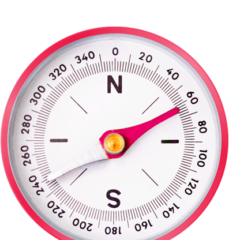Hello, friends,
The German elections took place on Sept. 26, and while the far-right Alternative for Germany (AfD) party came in second to last with 10.3 percent of the vote, it will be part of the negotiations in forming a government. By claiming its small share of seats, it has forced the country’s mainstream parties to normalize far-right positions in an effort to draw in the party’s fringe voters.
Before the election took place, we used Citizen Browser data to report on how the AfD party managed to dominate its supporters’ Facebook news feeds. Now, our colleagues at Germany’s Süddeutsche Zeitung have gone back to further analyze pre-election Citizen Browser data to determine what sort of messaging was making its way into the news feeds of different parties’ voters.
They found that from July through September, AfD voters were more likely to see attack posts from their party leaders on issues such as climate change, migration, and COVID-19, whereas voters from other parties were generally served coverage on those topics from established media outlets. In addition, they found:
- Posts from all parties received more likes on average when they attacked other parties.
- AfD voters were more likely to see posts related to “climate hysteria” rather than news stories about climate change. For AfD voters’ news feeds, seven out of the 10 most-seen posts about climate were from AfD parliamentary group leader Alice Weidel. These posts contained the keywords “climate dictatorship,” “re-education camp,” and the “left-green hysteria.” Left-wing and Green voters, meanwhile, saw an average of 22 to 32 posts related to climate change, with words including “climate,” “global warming,” and “CO2.”
- AfD voters’ news feeds were peppered with content about migration, which reached 83 percent of panelists from that party. Most of it came from party-operated pages. Voters from other parties, meanwhile, saw reports from media organizations and relief organizations. Over three months, AfD supporters saw an average of 21 posts on the topic of migration, including keywords “immigration,” “refugee,” or “deportation”—almost twice as many immigration-related posts as seen on the center-right Free Democratic Party (FDP) voters’ news feeds.
- AfD has made COVID-19 precautions a rallying issue for its supporters, which is reflected in the party’s Facebook posts. Voters from other parties saw fewer posts related to COVID-19. Posts by the AfD party about COVID-19 contained keywords like “panic mood,” “compulsory vaccination,” and alleged “discrimination” against unvaccinated people. For the other parties represented in the panel, COVID-19-related content did not make it into the top 10 types of posts seen. Posts from the Ministry of Health about COVID-19 reached AfD supporters but often attracted negative comments.
If you want to dig deeper in the data and see examples, see their report here.
In the U.S., we have covered how Facebook news feeds differ along partisan lines when it comes to key events like the Capitol riot. Our interactive tool Split Screen even gives a day-by-day snapshot of how feeds differ among Trump and Biden voters. We’re thrilled that SZ has partnered with us to reveal how polarization on Facebook is playing out in Germany as well.
Thanks for reading.
Best,
Angie Waller
Project Manager
Citizen Browser
